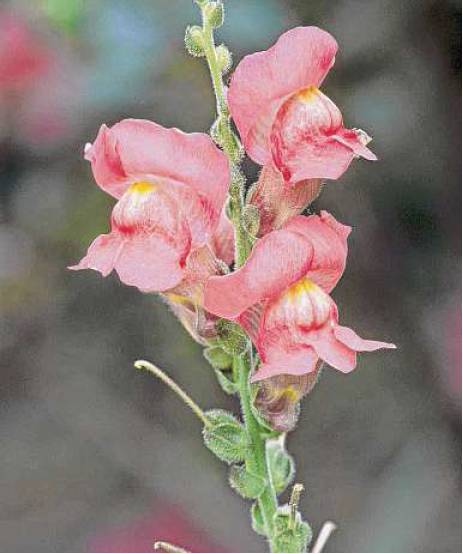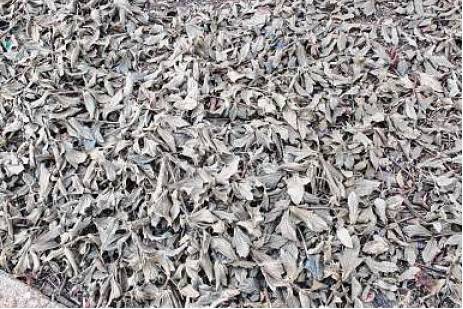IN THE GARDEN
After freeze, gardeners will have to learn to like ugly in the new year
By Brandi Keller CORRESPONDENT
Happy New Year to allff But before we get to our New Year’s resolutions, let’s focus on our outdoor foliage friends.
You may recall the advice after the winter storm of 2021 to hold off on pruning trees, shrubs and perennials until the danger of frost/freeze is over. The same holds true now, but even more so, since we still have the entire winter season ahead of us.
A phrase that became popular was “learn to like ugly.” Do not inflict damage on plants because of how they appear right now.
With so many variables, we cannot know the extent of damage to our landscape just yet. Only time will tell. Here are things to consider:
• Our landscape suffered a significant drought this past summer. Despite rain in the fall, woody shrubs and trees are still dealing with the effects, and this could magnify freeze damage.
• There was no gradual cooling off period. The shock from warm weather to cold may affect plants differently than the freeze in 2021.
• Soil moisture at time of freeze, proximity to house, location of afternoon sun, intensity of wind will all vary the results the freeze had on our gardens.
• Signs of freeze damage include deflated-looking leaves drooping to the ground, discolored leaves (brown or black), bark splitting and branch die-back.
Annuals, biennials, perennials and tropical plants
Herbaceous plants have flexible, not woody, stems that do not survive below-freezing temperatures. Freezing and thawing temperatures cause tender plant tissue to expand and collapse. Damage may appear as mushy tissue on foliage and stems, as dieback to the ground (hardy roots will grow new stems after winter), or as a complete plant loss.
Remove the mushy, slimy tissue. After letting the soil dry out a few days, add mulch in case of another freeze event. Leave everything else alone until the danger of winter has passed. Dried plant material serves as protection to the rest of the plant if there is another cold snap.
Cool-season annuals, like pansies and ornamental kale and cabbage, may be fine. Give them time to recover and water the soil if dry.
Pentas, blue daze and angelonia are likely done. I waited in vain for angelonia to come back after the freeze in 2021.
Tender perennials will exhibit the most damage in the form of mushiness. Begonia, society garlic, agapanthus, canna, ginger, banana, philodendron and succulents are examples of plants that may soften in a dreadful way. Clean mushy parts out as soon as possible, otherwise, the rot can continue downward to healthy plant parts, causing fungal infection and disease. Clean up to, but not into, the healthy tissue. Remove leaves on banana plants, but avoid pruning the trunk yet.
Hardy perennials will die back to the ground. Leave their dried stems until spring.
Woody tropical plants, such as hibiscus, ixora, croton and angel trumpet, all look fried, but wait until spring to prune. Dead leaves can be cleaned up off the branches.
Plumbago, pride of Barbados and oleander are perennial shrubs (evergreen in mild winters) that are head-to-toe crispy fritters now. The good news is that they should come back from the ground. The bad news is that their mere existence in this firewood state is like seeing big chunks of peeling paint in the living room. Resist pruning back. Removing dead wood will encourage new growth at the base, and we don’t want that yet.
Palm care
Palms grow from the apical meristem, the central growing point. Wintry weather affects palms by either causing fronds to brown, killing new emerging leaves (spear leaf), killing the apical meristem, or stem splitting.
Time will tell the extent of damage that has occurred. While you are sitting around waiting, do not prune fronds until the last chance of freeze. As a co-worker advised, leaving dried fronds also gives structural support. Damage can take some time to reveal itself. Avoid watering or fertilizing post-freeze. Fertilizing is not necessary until late spring anyway.
Woody ornamental trees and shrubs
Leave trees and shrubs alone until spring — unless it is a safety issue. This is the hard part if you like a nice and tidy appearance. But remember that neat and tidy in January and February are not necessarily what is best for your landscape plants. Any pruning of woody ornamentals sets them up for further freeze damage that may come in the next couple of months. Do not fertilize during this time.
Roses are pruned around Valentine’s Day, after the chance of a severe freeze has passed and when roses are about to come out of dormancy.
Some broadleaf evergreens do not have a scratch on them; others have leaf discoloration. I noted a camellia sasanqua with leaf and bud damage, which is too bad, since it was about to bloom.
Lawn care
Warm-season grasses are browning since the freeze. Give them time to grow again in the spring. Do not attempt to force growth, especially by applying fertilizer. The time to fertilize the lawn is in April.
Brandi Keller is a Harris County Horticulture Agent with Texas A&M AgriLife Extension.


